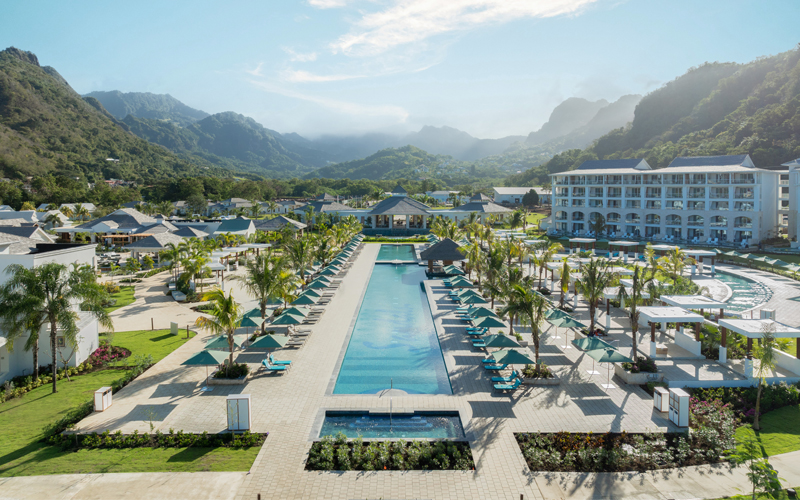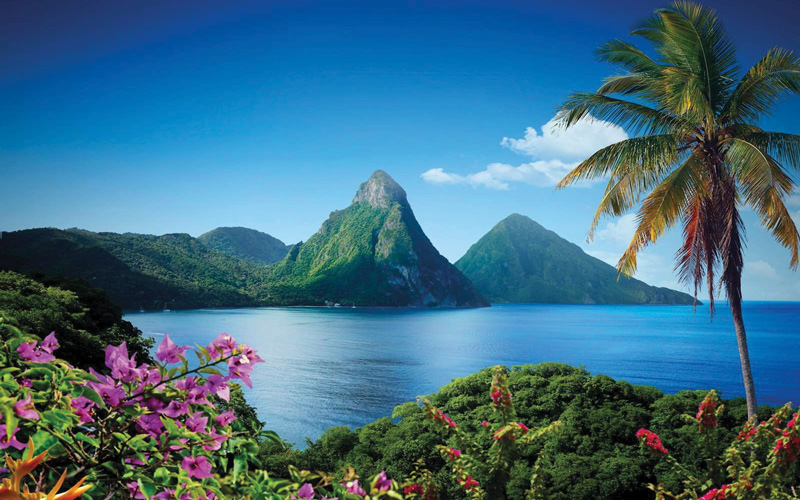Seaweed problems in the Caribbean
Sargassum, once almost exclusively the bane of seafarers,

has grown into a major headache for resort destinations from the Caribbean to Mexico, to South Florida, fouling beaches with stinking, rotting masses of seaweed. Unfortunately, “What’s your seaweed situation?” needs to be added to the list of questions agents ask of resorts in the region before booking stays for clients.
Formed into large brown mats, sargassum – a type of oversized algae – usually floats benignly far offshore, providing an essential habitat and food for sea life. The Sargasso Sea, a 700-mile wide, 2,000-mile long area of the North Atlantic surrounded by strong ocean currents, is the most famous (and notorious) habitat for sargassum, despised by sailors as a frequently windless region where sailing ships could sit becalmed for weeks. The area became known as the Horse Latitudes because stuck Spanish sailors sometimes had to throw their horses overboard in order to save water.
Lately, however, sargassum has been on the move. We got a preview of the coming crisis in April on a visit to St. Lucia, when we saw large mats of sargassum floating across the Caribbean Sea as our flight approached the island, and from our lofty vantage point at the Jade Mountain resort.
By early summer, sargassum was piling up on the eastern shoreline of St. Lucia and beaches across the Caribbean. The cleanup challenge at the St. James Club on the east coast of Antigua was so bad that management threw up its hands and decided to shut down until September.
In addition to being an unsightly mess on the beach, mats of sargassum floating just offshore can discourage swimmers, harm coral reefs, kill marine life (including sea turtles) by depleting oxygen in shallow waters, and foul boat motors, often making it impossible for local fishermen to work.
Other destinations that have been inundated with sargassum this year include the Riviera Maya, Grenada, Curacao, Bonaire, Barbados, the Dominican Republic, Trinidad and Tobago, Guadeloupe, Dominica, and Puerto Rico. In fact, it’s probably easier to make a list of destinations in the region that haven’t been affected; the islands of the Eastern Caribbean have been especially hard hit, but so has Mexico far to the west and Florida well up north.
“Although the strong-smelling, rotting seaweed arrives most years in many countries, the volume this year – reportedly up to three to four feet high in some locations – is so great that normal voluntary efforts to clean beaches are proving ineffective on many coastlines,” according to the Caribbean Council.
Agents need to be especially alert about sargassum when booking clients on southern and east coast beaches in the Caribbean, which have been especially hard hit. In the Eastern Caribbean, for example, that generally means the beaches facing the Atlantic; fortunately, many tourist resorts in these islands are on the Caribbean (west) coast, and thus may be unaffected.
The sargassum problem was actually forecast in January 2018, when the Optical Oceanography Laboratory at the University of South Florida reported on satellite imagery showing unusually high sargassum growth. The July 2018 issue of the monthly Sargassum Outlook Bulletin produced by the school suggests that the crisis is far from over. “In the coming months, there is a high chance that the bloom and sargassum beaching in the Caribbean will continue to at least October 2018, and possibly exceed the historical record in 2015,” according to the report – a good resource for proactive agents to check when planning future trips for clients.
This isn’t the first time that sargassum has been a problem. Caribbean beaches were hit by waves of seaweed in 2011 and again in 2015. But, this year seems to be worse. Researchers aren’t sure why there are years like 2018 when sargassum decides to start drifting, but suspected culprits include ocean changes related to climate change. Warmer ocean waters and nutrient-rich pollution could also be contributing to accelerated seaweed growth.
Beached sargassum isn’t a permanent problem: once it lands it begins to decompose, a stinky situation that can persist for about two months until the rotten seaweed sinks away.
Some resorts and destinations haven’t waited for nature to take its course, however, paying contractors to haul the seaweed off their beaches and, in some cases, to convert it into fertilizer. Tourism-dependent Barbados declared sargassum a national emergency and enlisted its military to aid in cleanup of piles of seaweed that have sometimes grown to 12 feet high.
The Mexican state of Quintana Roo, home of the Riviera Maya resorts of Cancun, Cozumel, Playa del Carmen, and Tulum, has constructed a series of offshore containment booms to intercept the sargassum before it even reaches the shore. Cancun has had cleanup crews working 24/7 to manually clear the seaweed from its famous white-sand resort beaches.
Many individual resorts also work to keep their own stretches of beach clear; properties like the Moon Palace Golf & Spa Resort, Viva Wyndham Maya, Fairmont Mayakoba and Rosewood Mayakoba have invested tens of thousands of dollars in specialized equipment like the Surf Rake to clear sargassum and other debris from their shores.
Therefore, it’s important to ask clients how important the beach is to their vacation plans, and whether a pool would be an acceptable alternative if seaweed is affecting their preferred destination or resort.
Alternatively, resorts may arrange transport for guests to other nearby beaches that are not affected by sargassum. The new Sandals resorts on Oistins Bay in Barbados offers complimentary transfers to seaweed-free Carlisle Bay, for example – another option agents should ask about before booking clients for a late summer or fall trip.




